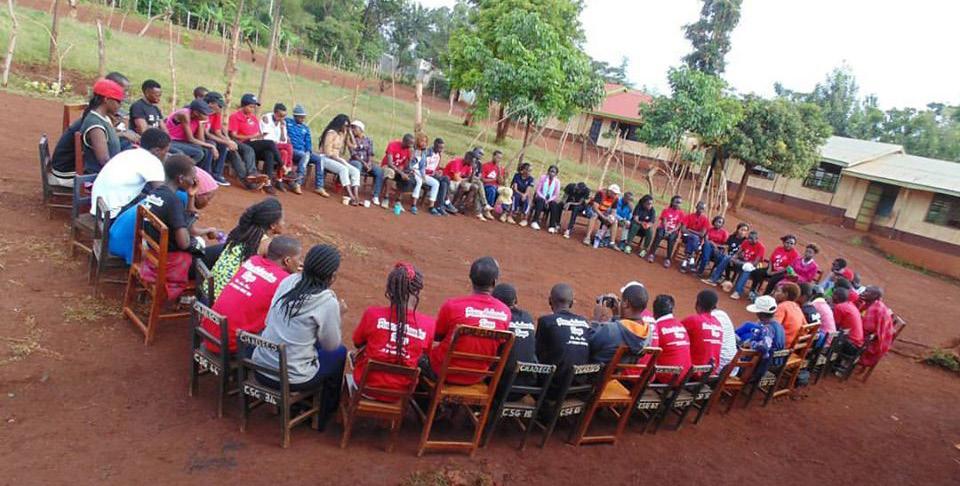
4 minute read
PUBLIC HEALTH APPROACH
Overview
A public health approach treats violence like a health crisis, suggesting policymakers use scientific evidence to identify what causes violence and what interventions can stop it from spreading.
This expands into a whole system approach when different organizations and professions come together to support youth and address the causes of violence holistically.
KEY TAKEAWAYS
• The most effective public health approaches are whole-system approaches, marked by encouraging collaboration across stakeholders from different agencies and organizations, conducting root cause and risk factor analysis, and identifying appropriate investments into prevention. • Whole-system approaches link public safety, health, education, social services, and criminal justice systems to enable proactive interventions before a young person ever encounters the criminal justice system (see Case Study 1 | Glasgow and Inter-Agency
Collaboration). • Effective public health approaches share several basic components: cooperative and collaborative program design, shared and sustained funding, and reliable data (see
Value of Public Health Approach). • While not part of the health system or service, schools play a vital role in a public health approach to youth violence as they offer a means of early intervention (see Communities and Schools). • Preventative measures—e.g., promoting critical thinking and using peer networks to break down and build resilience to extremist beliefs—are more successful than reactive interventions when combating extremist ideologies (see Combating Extremism). • A public health approach both requires mutual respect and trust between communities and those in positions of power, including teachers, administrators, and police officers— but over-policing should be avoided, and local contexts fully understood (see Trust,
Police, and Community Safety). • A public health approach recognizes the links between the social determinants of health such as social disadvantage and discrimination, and social deprivation, violence, crime and trauma, and seeks to support communities accordingly (see Social Determinants of
Violence and Trauma). • Experience of domestic violence and substance abuse can both be indicators of future propensity for violence (see Domestic Violence and Substance Use Disorders).
KEY RECOMMENDATIONS
• All relevant stakeholders—from the bottom-up to the top-down—should be identified and included to ensure successful adoption of public health approaches. • These relevant stakeholders should collaborate closely, including sharing budgets. • Programs should be iterative, inclusive of the communities they serve, informed by ongoing data collection, and context appropriate. • Researchers should look beyond traditional providers of public health approaches, such as health and social care services, to the education system and the communities themselves to expand existing data sets.
DIVE DEEPER
Value of the Public Health Approach
Communities And Schools
Case Study 1 | Glasgow and Inter-Agency Collaboration
Combating Extremism
Trust, Police, and Community Safety
Social Determinants of Violence and Trauma
Case Study 2 | Switzerland and Heroin Assisted Treatment (HAT)
Resources
Conclusions
The public health approach is a powerful way to draw on a broader set of skills and experiences in addressing violence and its root causes. Whether a reform begins by focusing on the provision of safer spaces and schools or retraining local authorities, or supporting people with substance use disorder, most public health approaches share certain components.
LOOKING AHEAD
First, it is important to identify all the relevant players and ensure that buy-in to a single mission occurs across the board and all relevant organizations, not only at the top or on the ground-level. This often means consistent training on the overall approach and on related
matters like trauma-informed practice and biases. This may also mean sharing budgets with people or organizations who have the necessary expertise and reaching into specific places like hospitals where the cycle of violence can be broken. Close collaboration and broader understanding ensure that all relevant knowledge can be collected and shared effectively, and it may unlock new avenues for prevention.
Programs should be iterative and closely involve the youth and community they serve. Not only can and should youth be involved in finding their own solutions, these close discussions allow programs to be proactive, to understand local needs and challenges and address them before they turn into violence. Ongoing data collection can also help monitor progress and highlight areas in need of additional attention.
Finally, context matters. Public health approaches should be organic to their communities and consider any legacies of marginalization or unequal opportunity. These can continue to affect a community’s experience or their relationship with local authorities. Such legacies take time and concerted effort to undo but addressing them contributes significantly to violence prevention.
FUTURE RESEARCH
As researchers seek to develop and evaluate new public health interventions, much of the work remains reactive and many of the traditional models around research and evaluation are US- and Euro-centric. New public health solutions may not be found in health or social care, which reflect the “acute” end of the spectrum, but in the daily ecosystem: in education, the community, and how youth experience the lives they lead. These feedback loops could be developed further to understand and replicate this demonstrated resiliency.
On the development of new research and interventions, experts in this area may benefit from collaborating more frequently with related disciplines to gain a broader perspective. They might also consider new research better incorporating the experience of impacted communities and exploring the interactions between disadvantage, marginalization, and youth violence. This is particularly important in the field of mental health research. Such broader consultations would expand existing data sets and help better tailor interventions to a community’s need.
A Sum of its Parts: The Whole System Approach
How the UK is shifting the focus of a long-running problem and taking a whole-system approach to stop youth violence.
Read the feature
Watch the video








